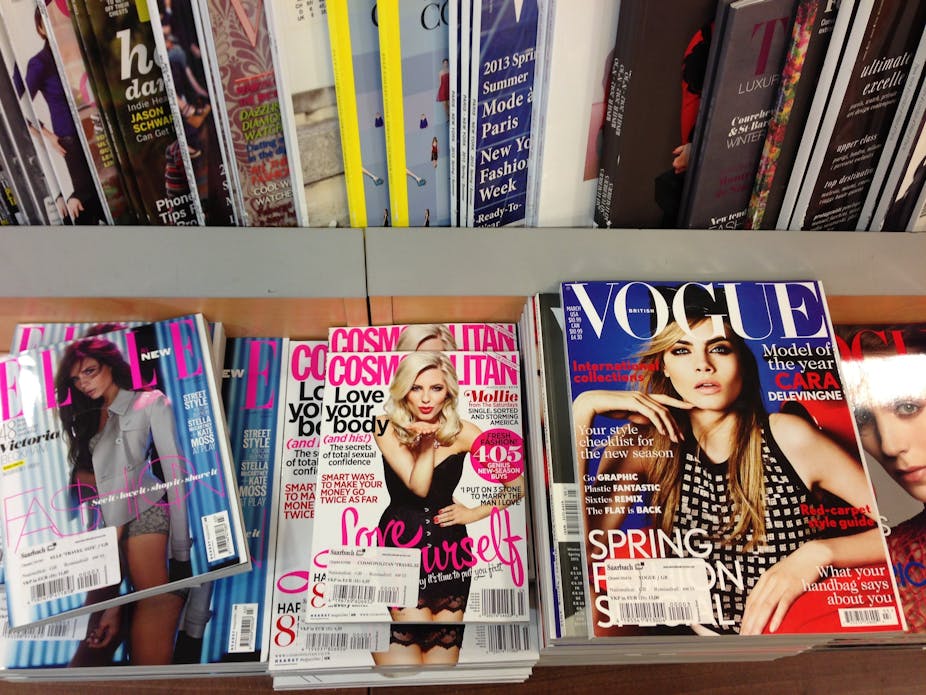British Vogue magazine has launched an issue in which they took the unusual step of only photographing “real” women for their fashion shoots. All the clothes were worn by professional women from multiple sectors, with not a single model among them.
Many would consider this a surprising move. Vogue is, after all, a publication which usually seems devoted to filling its pages with the most attractive women on the planet. But what does “attractive” actually mean? Is it even possible to define what we consider to be attractive in others, and desirable in ourselves?
Some beauty ideals do show surprising levels of cultural stability. The first cross cultural research into facial attraction demonstrated high levels of similarity across cultures in the kinds of facial features which were rated most attractive by observers.
Indeed, when we consider the kinds of faces that newborn infants prefer to look at, these also tend to be the faces which adults consider to be more attractive. Children only grow to agree more with adults as they age.
A notable exception, however, is body weight. Psychologists and anthropologists have documented strong preferences for female bodies in the obese and morbidly obese range in some groups, such as the Zulus of Kwa-Zulu Natal or rural Creoles of Nicaragua. In Western societies, our preferences for female body size tend to peak at the bottom end of what could be considered a healthy weight in a European woman.
There is also evidence that visual media – television, film, magazines (like Vogue) and advertisements – may play a key role in perpetuating and spreading body ideals.
In my own lab, we have demonstrated that visual exposure to very thin bodies – even if they look unappealing and emaciated – can lead to observers favouring a thinner body ideal than they held before. Images of obese bodies can likewise lead to observers favouring a larger body ideal.
Of course, perhaps the most critical feature of these internalised body weight ideals, is their power to cause psychological distress in those who do not meet their own ideal. Decades of research has linked “thin-ideal internalisation” and resulting body dissatisfaction to eating disorders in women, and women’s magazines have long been a target of interest for eating disorder researchers.
Women’s magazines typically include a large number of images of very slim women who are presented in a strongly aspirational fashion. Added to this, some individuals are particularly susceptible to comparing themselves with the standard they perceive to be set by others’ examples, a phenomenon known as social comparison.
Women with high social comparison tendencies often have elevated feelings of body dissatisfaction. It is unsurprising, then, that research has shown how young women with magazine subscriptions showed a drop in body satisfaction if they were vulnerable to these messages.
An unhealthy media diet?
The recent decision by Vogue to feature “normal” women in their November issue is particularly timely therefore. Psychological research suggests that if visual media included a representative distribution of healthy and typical body weights in a target population, body ideals and body satisfaction might well be less problematic.
However, an ongoing media diet of very slim female bodies reinforces this hyper-thin ideal. And the commercial realities of magazine sales means that it is always going to be challenging for individual companies to break the mould. While the cosmetics company Dove uses a range of women as part of its marketing strategy, this is a very rare approach.
So will British Vogue make significant changes to our national body ideals with one issue? Put simply, no.
The bias is already far too pervasive in society. Furthermore, the women featured may not be as thin as typical fashion models – but neither are they, on the whole, representative of the typical range of British women.
However, it is comforting to note that in our experimental study, we induced changes in body size ideals with only 30-40 images. An individual copy of Vogue contains many times this number of pictures, so I would certainly predict that the issue may temporarily improve the visual diet of regular readers.
Perhaps the most useful thing it will do is help the industry at large to move further in the right direction, and demonstrate what I hope will be a commercially viable approach for the future – for every body’s sake.

